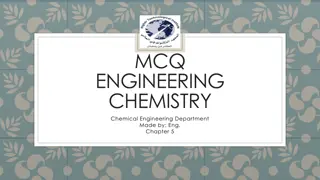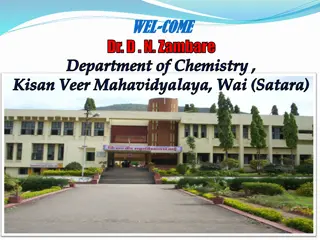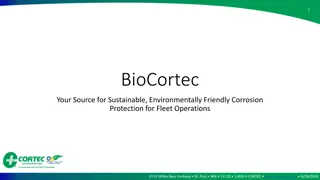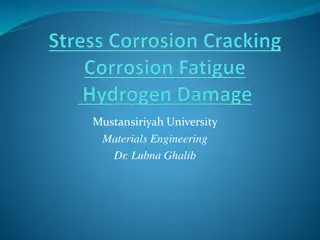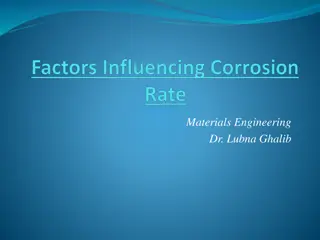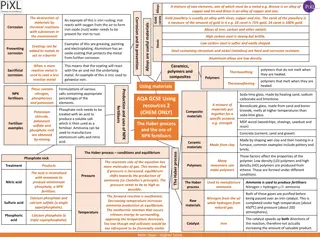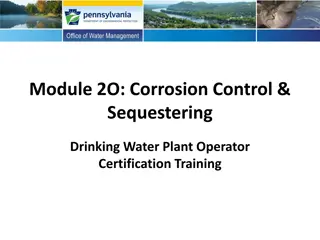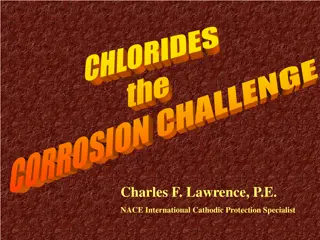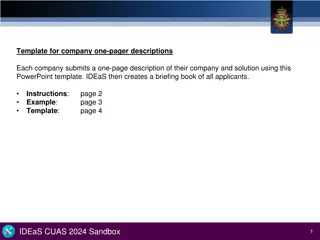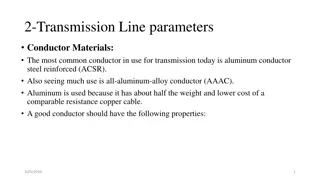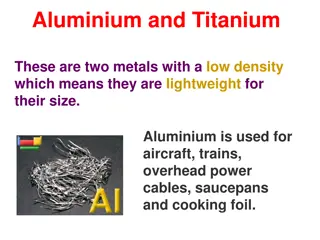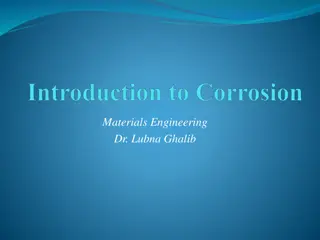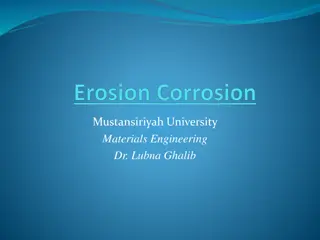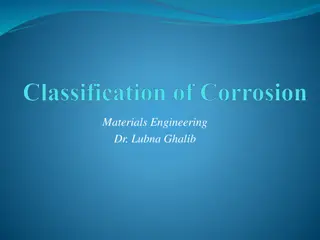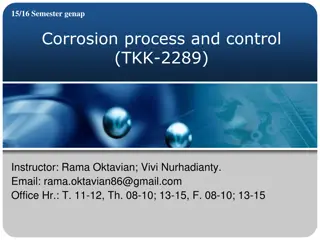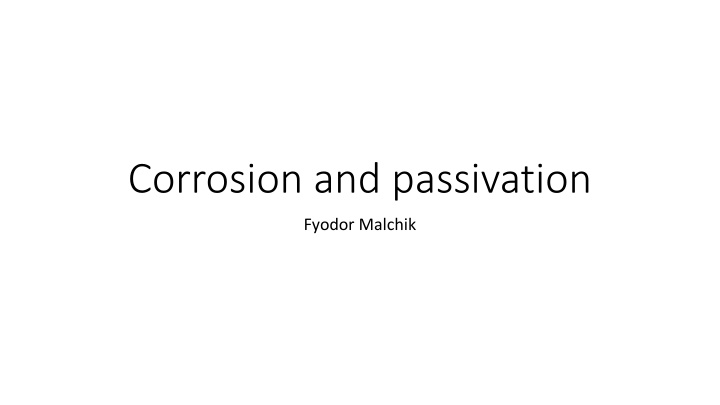
Corrosion Mechanisms and Prevention
Explore the world of corrosion and passivation through detailed explanations on metal corrosion, oxidation-reduction reactions, corrosion potential calculations, and the impact of environmental factors on the acceleration of corrosion. Learn about cathodic cells, galvanic protection, and ways to mitigate corrosion in different settings.
Download Presentation

Please find below an Image/Link to download the presentation.
The content on the website is provided AS IS for your information and personal use only. It may not be sold, licensed, or shared on other websites without obtaining consent from the author. If you encounter any issues during the download, it is possible that the publisher has removed the file from their server.
You are allowed to download the files provided on this website for personal or commercial use, subject to the condition that they are used lawfully. All files are the property of their respective owners.
The content on the website is provided AS IS for your information and personal use only. It may not be sold, licensed, or shared on other websites without obtaining consent from the author.
E N D
Presentation Transcript
Corrosion and passivation Fyodor Malchik
Metal Corrosion the destruction of a material by chemical or electrochemical reaction to its environment typically a transfer of electrons from one metal to another through an Oxidation-Reduction Reaction.
Oxidation - Reduction Reduction Anodic metal gives up electrons (oxidation) + + 2 2 Fe Fe e + + 3 3 Al Al e Cathodic metal accepts electrons (reduction) + + 2 2 Cu e Cu Or gases accept electrons (reduction) + + 2 2 ( ) H e H gas 2
Corrosion Mechanism Cathodic cell discussion of emf galvanic series intergranular corrosion oxidation-reduction of iron salt effects
Slides on Impact of Corrosion Aluminum corrosion Pitting Crevice corrosion Contaminants Environments
Basics of Corrosion EMF series is a numeric rating of potential under ideal conditions Galvanic Series is a practical listing Galvanic Protection
Steel Corrosion Initial Oxidation Reaction + + 2 2 2 Fe OH ( ) Fe O H O 2 2 2 Secondary Oxidation Reaction 1 2 + + 2 Fe OH ( ) 2 Fe OH ( ) O H O 2 2 2 3 Rust
Corrosion potential calculation Reduction Reaction must have higher potential than the oxidation reaction or they will not form a cathodic cell + + 2 2 Fe e Fe -0.440 V + + 2 2 Zn e Zn -0.763 V Relative measure of corrosion ( ) V = = + . 440 . 763 0323 . V
Acceleration of Corrosion Physical Characteristics exposed area (less, increases corrosion rate) time of exposure (more time, more corrosion) Environmental Characteristics acidic environment sulfur gas environment temperature (high temps, more corrosion) moisture (oxygenated moisture)
Passivation A protective film in oxidizing atmospheres chromium,nickel, titanium, aluminum Metal oxide layer adheres to parent metal barrier against further damage self-healing if scratched Sensitive to environmental conditions passivated metal may have high corrosion rates
Forms of Corrosion Uniform corrosion of a single metal usually an electrochemical reaction at granular level relatively slow and predictable rusting of exposed steel, tarnished silver easily corrected with coatings and regular maintenance
Forms of Corrosion Galvanic Corrosion 2 dissimilar metals, electrolyte, electrical connection and oxygen Pitting Corrosion Localized corrosion forming holes or indentations Difficult to initially detect
Forms of Corrosion Crevice Corrosion narrow crevice filled with ionized solution Oxygen-rich on the outside, oxygen-poor on the inside metals oxidize with salt anions FeCl2 and pH rises in cathodic zone H+ may destroy passivity
Forms of Corrosion Intergranular Corrosion corrosion along grain boundaries at microscopic level stainless steels and heat treated high-strength steels carbides precipitate along grain boundaries leaving these areas with no alloyed Chromium Welds can have this same depletion effect
Forms of Corrosion Cavitation and Erosion in Pipe particulate matter turbulent flow abrades away the corrosion product abrasion of zinc coatings
Forms of Corrosion Stress Corrosion Cracking tensile stress and corrosive environments cracks are initiated at corrosion areas tensile stresses propagate the crack corrosion further deteriorate crack etc.....
Corrosion Products Fe + 2OH = Fe(OH)2 Passivity barrier breaks down Presence of Oxygen Moisture Oxidation of Fe(OH)2 Fe(OH)3 (rust)
Corrosion of Metals in Concrete Reinforcing Steel & Prestressing Steel Concrete is Normally Highly Alkaline Protects Steel from Rusting if Properly Embedded If Corrosion Occurs, the Reaction Products are Greater in Volume Than the Original Steel Corrosion Initiation and Rate Depends On Amount of Concrete Cover, Quality of Concrete Details of Construction, & Exposure to Chlorides
Avoiding Corrosive Situations Choose couple metals close on the galvanic series Use large anode, and small cathode areas Electrically insulate dissimilar metals Connect a more anodic metal to the system Avoid turbulent flow and impingements in pipe systems
Examples of Corrosion in CE Steel strapping or iron nails with copper pipe is ok, but they may rust with time. Never use Copper strapping or attachments with steel pipe, steel pipe will corrode condensation on the bottom of cold water pipe
Corrosion Prevention Coatings Barrier films Inhibitive Pigments Sacrificial treatments Paint Active Cathodic Protection



